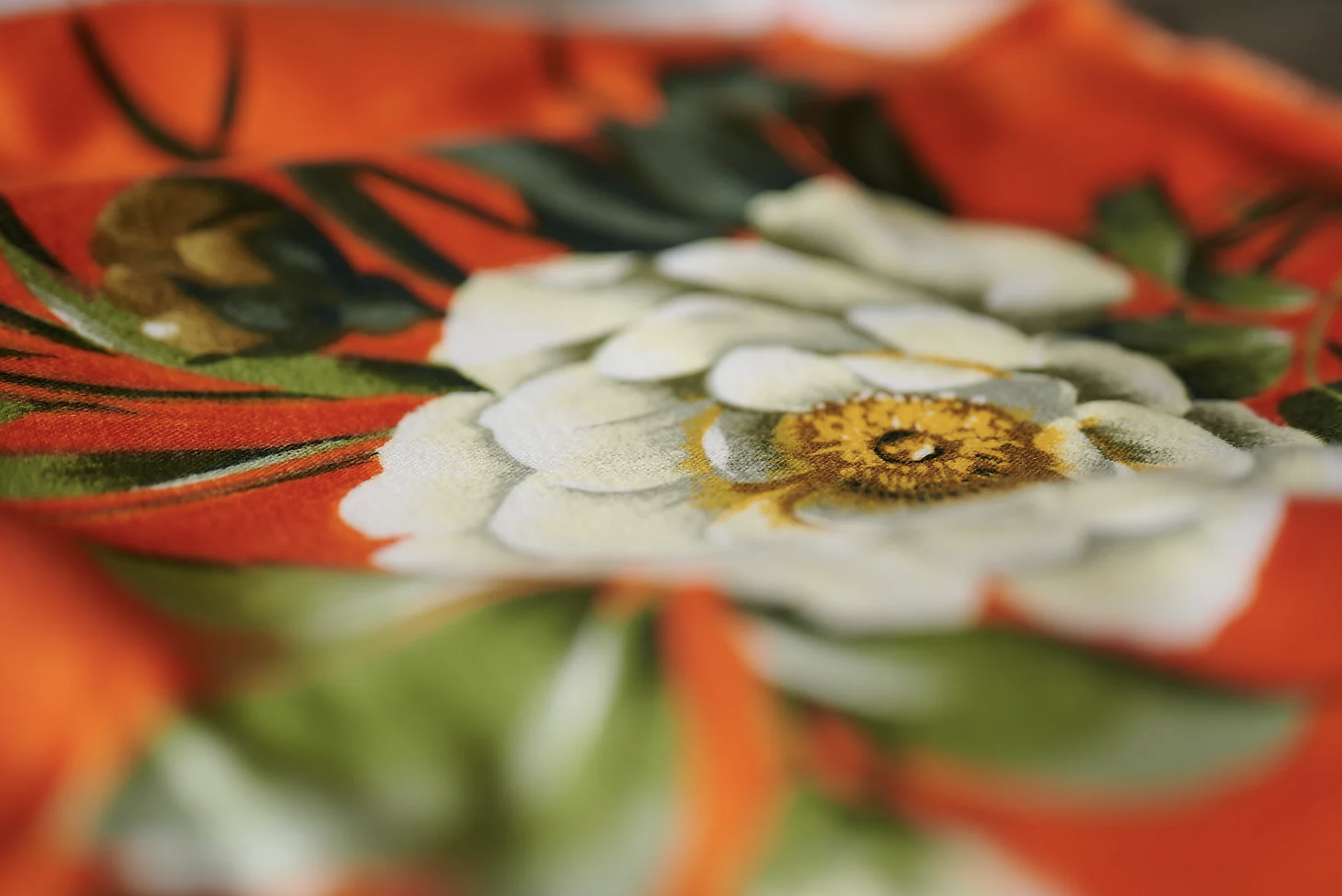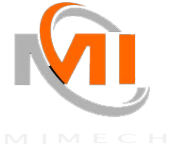Life style
Exploring the Art of Textile Design: Merging Screen Print with Embroidery Techniques

Key Takeaways
- In-depth exploration of combining screen printing with embroidery to create distinctive textile designs.
- Insightful planning and design strategies for integrating two diverse techniques into a cohesive art piece.
- Latest trends, sustainability practices, and community resources for contemporary textile designers.
Introduction to Textile Design Innovation
The textile industry is constantly innovating. Artists and designers push boundaries to create fabrics that offer new experiences. A recent trend is the combination of screen printing and embroidery. This partnership results in garments and textiles featuring bold graphics and delicate textures. This synergy is well-executed by entities specializing in Denver screen print and embroidery, illustrating the professional integration of these designs into wearable art, home décor, and more. To balance screen printing and embroidery, designers must master each technique independently. Together, they create unique designs with a complex narrative. Integrating screen printing with embroidery requires a well-thought-out design process and careful material selection.
Planning Your Design: Tips and Tricks
At the inception of every mixed media textile project stands the planning phase, a crucial step that shapes the journey of creation. After envisioning a design that harnesses screen print and embroidery, the artist must select materials to sustain the manifold processes. The fabric choice is pertinent; it must be compatible with the screen-printing ink and resilient enough to withstand the tension and force applied during embroidery. Additionally, planning for the final application of the textile is critical, as different end uses—from runway fashion to functional art installations—dictate different approaches in design and durability.
Screen Printing: The Foundation of Your Design
Screen printing is often the foundational layer in the mixed media textile design. The screen must be prepared before the first ink drop meets the fabric. This involves coating the screen with a light-reactive emulsion, placing a transparency of the design on top, and exposing it to light, which hardens the emulsion where it is not blocked out by the design. Afterward, ink is swiped across the screen, permeating the exposed portions and imprinting the design onto the fabric. Preparing the fabric for this process and laying down a crisp screen print becomes the groundwork for subsequent embroidery, setting the stage for further embellishment.
Embroidery: Adding Depth and Texture
Embroidery is like painting with thread; each stitch is a deliberate stroke that adds depth, color, and texture to the textile canvas. Traditional stitches like the backstitch or satin stitch can outline screen-printed designs or fill areas with a lush, textured appeal. Broader stitches can cover larger areas, creating bold statements, while delicate stitches are perfect for intricate details. Mastering embroidery involves not just the knowledge of various stitches but also understanding how to integrate them with the screen-printed elements to enhance the overall design without overwhelming it.
Combining Techniques: The Creative Process
The creative process of joining screen printing with embroidery is akin to a well-orchestrated ballet. Each technique must perform its role perfectly and show consideration for the other. Typically, screen printing is done first, acting as a map that guides the embroidery. The artist must decide which aspects of the print will be accented or supported by stitches or perhaps even purposefully contrasted. It is a process of building layers that, when done skillfully, results in a multidimensional and sensory-rich textile that is immensely visually pleasing and to the touch.
Finishing Touches: From Creation to Curation
Achieving a visually stunning and lasting work of textile art requires thorough attention to the finishing touches. This goes beyond the creation of the fabric to include the conservation of the art piece. Depending on the intended use, a textile might require backing for additional structure, especially in areas with heavy embroidery. The careful application of a finish, such as a sealant for the screen print or a stabilizer for the embroidery, will help ensure that the beauty of the fabric endures through use and time. Informing caretakers or customers of the proper methods for maintaining and displaying the textile piece will further extend its life and appearance.
Cutting-edge trends in Textile Design
Moving forward, the textile design landscape is reshaped continuously by emerging trends and societal values. Sustainability has become a forefront consideration with designers seeking to minimize environmental impact while maximizing creativity and innovation. Eco-friendly materials, upcycling, and conscientious production methods are integrated into modern textile practices, as illustrated by authoritative sites like EcoTextile News. Additionally, the intersection of technology with traditional craftsmanship opens up new avenues for textile artists. Resources such as TextileArtist.org serve as a showcase and educational platform, elucidating how progressive techniques and digital tools can be leveraged to expand the horizons of textile art.
Workshops and Community: Sharpening Your Skills
A flourishing artist is not isolated; they are often part of a more extraordinary tapestry that includes workshops, mentorships, and communities. These collective spaces offer shared knowledge, techniques, and support systems. For those venturing into screen printing and embroidery, local and digital workshops can be invaluable resources for perfecting their craft. Likewise, joining forums and collaborative networks fosters an environment ripe for exchange and critique, which is essential for personal and artistic development.
Gallery of Inspiration: Celebrating Textile Art
Perusing a gallery of inspirational textile works can ignite the spark of creativity in any artist. These physical or digital collections create dialogues around textiles’ expressive power and cultural significance. Engaging with the work of others and understanding their creative processes can serve as a stepping stone to innovative ideas and novel applications in one’s work. From the interwoven narratives told by elaborate embroidery to the bold statements of screen prints, each piece offers a unique perspective on the vibrant world of textile design.
Conclusion
The combination of screen printing and embroidery represents a blend of precision, passion, structure, and fluidity. As textile artists continue to explore and innovate within this space, the potential manifestations of this convergence seem boundless. The future of textile design is bright and full of opportunities for creative expression and heartfelt storytelling through the fabric medium. This art form, steeped in tradition yet ever-evolving, invites creators and enthusiasts to experience textiles as functional items and canvases for conveying intricate visual and tactile tales.
Life style
The Perfect Guide to Choosing Anniversary Flowers

Introduction
Anniversaries are special milestones that celebrate love, commitment, and cherished memories. One of the most timeless and heartfelt ways to express your affection is through flowers. Whether it’s your first anniversary or your fiftieth, the right floral arrangement can convey emotions words sometimes can’t. This guide explores the significance of anniversary flowers, popular choices, and tips for selecting the perfect bouquet. We’ll also discuss the convenience of anniversary flowers delivery and how to make your gift even more memorable.
The Significance of Flowers in Anniversary Celebrations
Flowers have been symbols of love and devotion for centuries, with different blooms carrying unique meanings. Opting for anniversary flowers delivery ensures your gift arrives fresh and beautifully arranged, making the occasion even more special.
Key reasons flowers are perfect for anniversaries:
- Romantic Symbolism – Roses, lilies, and tulips represent love and passion.
- Personalized Messages – Different colors convey distinct emotions (red for love, pink for admiration).
- Timeless Elegance – A well-chosen bouquet enhances any celebration.
Whether you’re near or far, having flowers delivered adds a thoughtful touch to your anniversary surprise.
Best Flower Choices for Different Anniversaries
Each anniversary year has traditional and modern floral associations. Here are some ideal picks:
- 1st Anniversary (Paper) – Carnations (symbolizing young love)
- 5th Anniversary (Wood) – Daisies (representing loyalty and simplicity)
- 10th Anniversary (Tin/Aluminum) – Daffodils (symbolizing joy and renewal)
- 25th Anniversary (Silver) – Irises (meaning wisdom and admiration)
- 50th Anniversary (Gold) – Yellow roses (celebrating enduring love)
Matching flowers to the anniversary year adds a meaningful layer to your gift.
Factors to Consider When Choosing Anniversary Flowers
Before selecting a bouquet, keep these aspects in mind:
- Recipient’s Preferences – Favorite flowers or colors make the gift more personal.
- Seasonal Availability – Peonies in spring, sunflowers in summer, etc.
- Arrangement Style – Classic roses, mixed bouquets, or elegant orchids.
- Fragrance – Some flowers, like lilies, have a strong scent, while others are subtle.
A well-considered choice ensures your flowers resonate deeply with your partner.
Why Fresh Flowers for Anniversaries Make the Best Gift
While chocolates and jewelry are great, flowers for anniversaries remain a classic for good reason:
- Instant Emotional Impact – Bright, fresh blooms create an immediate sense of joy.
- Versatility – Suitable for any anniversary, whether casual or grand.
- Customization Options – Add-ons like chocolates, vases, or handwritten notes enhance the gift.
- Symbolic Longevity – Just as love grows, flowers can be preserved as keepsakes.
A beautifully arranged bouquet is a gesture that never goes out of style.
Tips for Preserving Anniversary Flowers
Make your floral gift last longer with these care tips:
- Trim Stems Diagonally – Helps flowers absorb water better.
- Change Water Daily – Prevents bacterial growth.
- Keep Away from Direct Sunlight – Extends freshness.
- Use Flower Food – Packets provided with bouquets help nourish blooms.
For a lasting memory, consider drying petals or pressing them in a frame.
Unique Ways to Present Anniversary Flowers
Go beyond the traditional bouquet with these creative ideas:
- Flower Subscription – Monthly deliveries to keep the celebration ongoing.
- Flower Wall or Petal Path – For a grand romantic gesture.
- Personalized Message-in-a-Bottle – Combine flowers with a heartfelt letter.
- Surprise Delivery at Work – Make their day extra special.
Adding a personal twist makes the gift unforgettable.
Conclusion
Anniversary flowers are more than just a gift—they’re a timeless expression of love. Whether you choose a classic red rose bouquet or a modern mixed arrangement, the right flowers can make your anniversary unforgettable. With the convenience of anniversary flowers delivery, you can surprise your loved one no matter where you are. And when you select the perfect flowers for anniversaries, you’re not just giving a beautiful present—you’re celebrating your journey together in the most heartfelt way. Choose wisely, and let your flowers speak the language of love.
Life style
Rejuvenation Skin Care: Your Guide to Timeless Beauty and Healthy Skin

Introduction
In today’s fast-paced world, maintaining healthy, youthful skin requires professional care and advanced treatments. At Re-juvenation Skin Care Clinic, we combine science-backed techniques with personalized attention to help you achieve your skincare goals. Whether you’re seeking preventive maintenance or transformative results, our classic Re-juvenation Skin Care Clinic approach blends time-tested methods with cutting-edge technology. This comprehensive guide explores our philosophy, services, and what makes professional skin rejuvenation different from at-home routines.
The Re-juvenation Skin Care Clinic Philosophy
Our Re-juvenation Skin Care Clinic operates on three core principles:
Personalized Treatment Plans
- Comprehensive skin analysis
- Custom-blended product formulations
- Condition-specific protocols
Science-Based Approaches
- Medical-grade equipment
- Clinically proven ingredients
- Results-driven methodologies
Holistic Wellness Integration
- Nutritional counseling
- Stress management techniques
- Lifestyle optimization advice
We treat skin as an organ reflecting overall health, not just a surface to be decorated.
Common Skin Concerns We Address
Our clinic specializes in treating:
✔ Aging-Related Issues
- Fine lines and wrinkles
- Loss of elasticity
- Age spots and pigmentation
✔ Environmental Damage
- Sun damage repair
- Pollution protection
- Dehydration reversal
✔ Medical Conditions
- Acne and rosacea
- Eczema and psoriasis
- Scarring and stretch marks
✔ Preventive Maintenance
- Collagen stimulation
- Barrier function strengthening
- Early intervention strategies
Each concern requires specialized treatment protocols for optimal results.
Our Signature Treatment Technologies
We invest in medical-grade equipment for superior outcomes:
Resurfacing Modalities
- Fractional laser treatments
- Medical microdermabrasion
- Chemical peel systems
Stimulation Therapies
- Radiofrequency skin tightening
- Microcurrent facial toning
- LED light therapy
Injection Techniques
- Neuromodulators for dynamic wrinkles
- Dermal fillers for volume restoration
- Mesotherapy for nutrient delivery
All procedures are performed by licensed professionals with extensive training.
The Classic Re-juvenation Skin Care Clinic Experience
Our classic Re-juvenation Skin Care Clinic package includes:
Consultation Process
- Detailed skin mapping
- VISIA complexion analysis
- Lifestyle assessment
Treatment Protocol
- Deep cleansing preparation
- Customized active serums
- Specialized massage techniques
- Targeted mask applications
Post-Treatment Care
- Homecare product recommendations
- Follow-up scheduling
- Progress tracking
This comprehensive approach ensures lasting results beyond the treatment room.
What to Expect During Your Visit
A typical appointment includes:
- Skin Assessment (15-20 minutes)
- Visual examination
- Digital imaging
- Treatment Session (30-90 minutes)
- Cleansing and prep
- Primary procedure
- Soothing applications
- Post-Care Consultation (10-15 minutes)
- Immediate aftercare instructions
- Product recommendations
Most clients notice visible improvements after just 1-3 sessions, with optimal results appearing after a complete treatment series.
Maintaining Results Between Visits
Extend your clinic results with:
✔ Medical-Grade Homecare
- Pharmaceutical-strength retinoids
- Antioxidant serums
- Growth factor formulations
✔ Lifestyle Practices
- SPF 30+ daily application
- Adequate hydration
- Antioxidant-rich diet
✔ Periodic Maintenance
- Monthly facials
- Seasonal peel treatments
- Annual skin assessments
Consistency is key for sustained skin health improvement.
Conclusion
At Re-juvenation Skin Care Clinic, we believe beautiful skin begins with healthy skin. Our classic Re-juvenation Skin Care Clinic methodology combines advanced dermatological science with individualized attention to address your unique complexion needs. From cutting-edge treatments to timeless skin care wisdom, we provide comprehensive solutions for all skin types and concerns. Whether you’re beginning your skincare journey or seeking to enhance an existing routine, professional guidance makes the difference between temporary fixes and lasting transformation. Schedule your consultation today to discover how our evidence-based approach can help you achieve and maintain your healthiest, most radiant skin.
Life style
The Importance of Consistency Across Your Digital Profiles

A consistent digital presence strengthens your professional brand and ensures that potential employers, clients, and collaborators receive a clear and unified impression of your expertise. Inconsistent information across multiple platforms can create confusion and weaken your credibility.
Aligning Information Across Platforms
Ensure that your job titles, work history, and skills are consistent across LinkedIn, personal websites, and other professional platforms. Discrepancies may raise questions about the accuracy of your experience.
Using a Cohesive Personal Brand
Your profile photo, headline, and summary should reflect the same tone and message across different platforms. A well-defined brand makes it easier for recruiters and industry professionals to understand your expertise and career focus.
Synchronizing Updates and Achievements
Regularly update all your profiles with new skills, certifications, and accomplishments. Keeping information current demonstrates engagement and growth in your field.
For expert guidance on crafting a professional and consistent digital presence, visit Professional Profile.
About Professional Profile
Professional Profile helps professionals craft compelling digital profiles that amplify their online presence and open doors to career opportunities. Through expert advice, tools, and resources, Professional Profile empowers individuals to showcase their skills, build a personal brand, and navigate the digital landscape for career success.
-

 News1 year ago
News1 year agoVaping: Beyond the Hype – Unveiling the Risks and Realities
-

 Entertainment2 years ago
Entertainment2 years agoUnleashing Geekdom: Exploring the Wonders of Geekzilla Radio
-

 Fashion2 years ago
Fashion2 years agoWhat is λιβαισ? A Complete Guide
-

 News2 years ago
News2 years agoThe Travel Resorts of America lawsuit (Legal Controversy)
-

 Life style1 year ago
Life style1 year agoDemystifying λυσασ: Unveiling the Enigmatic Concept
-

 Games2 years ago
Games2 years agoHow To Play Baduk game: Unveiling the Art of Strategic Brilliance
-

 News2 years ago
News2 years agoAbraham Quiros Villalba: Unveiling the Journey of a Visionary
-

 Tech1 year ago
Tech1 year agoUnlocking the Secrets of 02045996875: UK’s Unique
